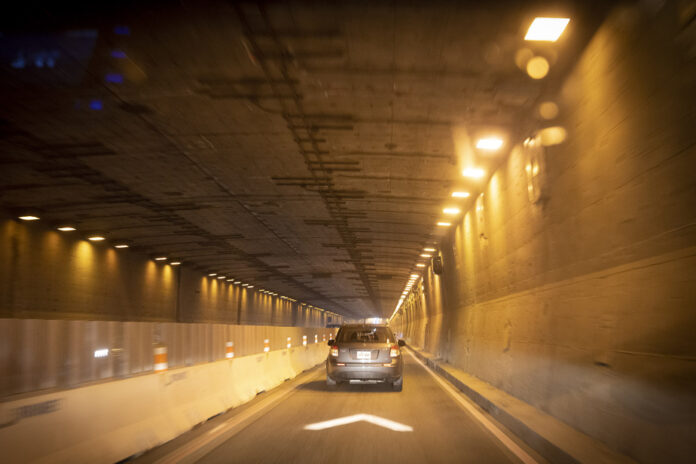Drivers drive much too fast around the Louis-Hippolyte-La Fontaine tunnel. Barely implemented, the mobile photo radar of the A25 megasite has already become the most lucrative in Quebec, reveal new government data.
Since the device was installed at the end of January, nearly 900 drivers have received tickets, courtesy of the new photo radar. Its addition was made after authorities noted around 20 accidents and collisions in the tunnel, which has had its lane count halved.
The fines imposed on road users in February are very high; they average $438, according to the latest report on speed cameras and red light cameras from the Department of Justice. This is four times more than the average of other mobile speed cameras on the network.
The Highway 25 photo radar has raised nearly $400,000 in its first month of service.
By comparison, on the other side of the tunnel, the fixed speed camera located on Highway 20 near Boulevard de Mortagne issued 823 tickets in February, for a total of $89,000. This device is however, month after month, one of the most active on the Quebec network since its implementation more than 10 years ago.
The high bill for drivers of the A25 is explained in particular by the fact that the fines are doubled in the construction zone. By referring to the calculation grid of the Highway Safety Code, we can easily estimate that the average driver caught on the spot was driving between 90 and 95 km/h. And this, while the limit has been reduced to 50 km / h.
To date, there are 54 photo radars in Quebec, 30 of which are fixed and 24 of which are mobile. In particular, these can be placed in school or “accident-prone” zones. At the La Fontaine tunnel, “there is only one device in place, for the moment”, specifies the spokesperson for the Ministry of Transport and Sustainable Mobility (MTMD), Gilles Payer.
As the Louis-Hippolyte-La Fontaine tunnel sector is regularly jammed due to work in the tunnel, it is especially when the motorway is free of obstructions that the speed of traffic is significantly higher than the imposed limit. “In other words, all of these fines are probably concentrated in the evening and on weekends, when traffic is much more fluid,” notes the expert in transport planning at the University of Montreal Pierre Barrieau.
“All these figures validate the relevance of the intervention. Personally, I would recommend that we qualify this photo radar as a pilot project and that we aim to implement it elsewhere, on other construction sites. We have a serious road safety problem in Quebec around our work sites,” said Mr. Barrieau.
At the Association of Workers in Road Signs of Quebec (ATSRQ), President Jean-François Dionne says his members still have serious fears for their safety in the La Fontaine tunnel. “People often drive between 90 and 110 km/h if you start from the Charron bridge to the first exit of the tunnel. It’s quiet during rush hour, but outside of that, the speeds are very high, especially in the evening,” laments Mr. Dionne in an interview.
He regrets, however, that the funds generated by the tickets have not been used to do more publicity and awareness to protect workers. “We could have taken some of these tickets to do more, precisely. It takes national publicity on construction site safety. What we want is for everyone to slow down. There are lives behind it,” Mr. Dionne insists.
Last October, La Presse reported that flaggers feared the worst in view of obstructions in the Louis-Hippolyte-La Fontaine tunnel. Already observing an increase in accidents at the time, their association has been calling for more safety in the exercise of the profession for years.
For Marc Cadieux, CEO of the Quebec Trucking Association, the situation bears witness to the fact that “we must amplify the message of respecting speed limits in Quebec, especially around construction sites, where we have experienced several regrettable accidents in the last years “.
“I am forced to observe that there are still a lot of speeds that are not respected, mainly in more risky places, such as around construction sites. We need to use this data as an index of awareness with road users, including our members in the industry, by increasing awareness and training,” concludes Mr. Cadieux.


















